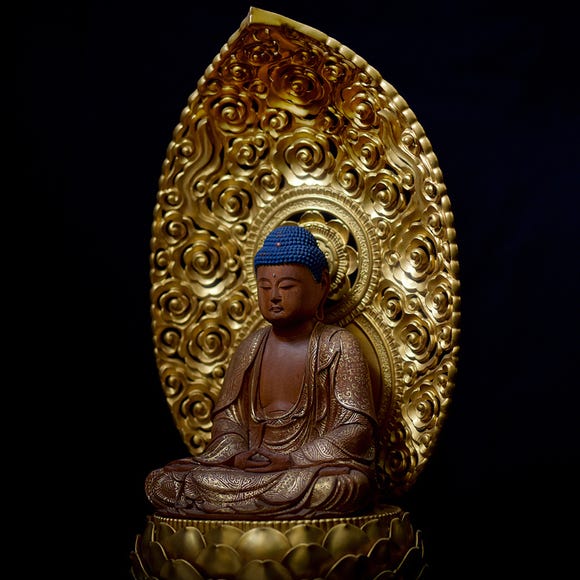
Unlike women's kimonos, where patterns often dictate formality, the formality of men's kimonos is predominantly determined by the fabric. Men's kimonos generally fall into three main styles, each designed for different occasions. This guide explores these classic styles.
Men’s Kimono Rentals In Tokyo

1. Kuromontsuki Haori Hakama

The kuromontsuki haori hakama is the highest-ranking men’s kimono, often reserved for formal events like weddings, coming-of-age ceremonies, and funerals.

This outfit includes a haori (a light coat) and hakama (loose trousers). The haori is typically made from black habutai (a traditional silk fabric), while the hakama is crafted from sendaihira, a refined silk from the Sendai region of Japan.
The five kamon (family crests) on the haori add an extra layer of elegance and formality to this attire, making it Japan’s top men’s formal wear.
2. Iromontsuki Haori Hakama

This slightly less formal style is called the iromontsuki haori hakama. It features a colored habutai haori, paired with a nagagi (a long kimono without trousers) and sendaihira hakama.
Perfect for weddings and age ceremonies (but generally not for funerals), this attire comes in variations with five, three, or one kamon.
The fewer the kamon, the more casual the outfit—so for highly formal events, a five-kamon haori is recommended.


3. Haori Hakama (Standard)

The haori hakama is a versatile choice for slightly less formal occasions. There are two main fabric options for this style: omeshi (a type of silk crepe) and tsumugi (a woven silk). Generally, omeshi is considered more formal than tsumugi. The number of kamon on this outfit is usually three or one, indicating a lower level of formality than the iromontsuki style.
Other Styles

・Nagagi: This is a style that doesn’t include trousers like the hakama. It’s more casual and can be paired with either omeshi or tsumugi fabric. You can mix and match the haori and nagagi based on your preference, creating a unique look that still maintains elegance.
・Kinagashi: On informal occasions, a man can wear a kimono without the haori coat—this is known as kinagashi. This is a simpler, comfortable way to wear a kimono, perfect for anyone who wants to try out the traditional look in a more relaxed setting.
- Kamon: Family crest or emblem
- Haori Hakama: Coat and trousers set
- Omeshi: Silk crepe kimono
- Tsumugi: Woven kimono fabric
Men’s Kimono Rentals in Kyoto
When choosing a men’s kimono, consider the occasion and fabric. With these styles, you can embrace Japanese tradition in a way that feels right for you!
Illustrations courtesy of Manga de Japan
*Prices and options mentioned are subject to change.
*Unless stated otherwise, all prices include tax.
Popular Tours & Activitiess
Recommended places for you
-

ISHIDAYA Hanare
Yakiniku
Kobe, Sannomiya, Kitano
-
Appealing

Rukku and Uohei
Izakaya
Sapporo / Chitose
-

Kambei Sannomiyahonten
Yakiniku
Kobe, Sannomiya, Kitano
-
Goods

Yoshida Gennojo-Roho Kyoto Buddhist Altars
Gift Shops
Nijo Castle, Kyoto Imperial Palace
-

Jukuseiniku-to Namamottsuarera Nikubaru Italian Nikutaria Sannomiya
Izakaya
Kobe, Sannomiya, Kitano
-

Kanzenkoshitsuyakinikutabehodai Gyugyu Paradise Sannomiya
Yakiniku
Kobe, Sannomiya, Kitano
-

How to Get Don Quijote's Exclusive 2025-2026 Winter Gift (+Tax-Free Savings)
-

Strawberries, Style, and Tokyo’s Coolest Neighborhood: Winter Afternoon Tea in Kichijoji
by: Guest Contributor
-

This Winter, Godzilla Takes Over Haneda Airport
by: Guest Contributor
-
Ad

Discover the "Miraculous Forest" in the Heart of Tokyo: The Institute for Nature Study (9 Minutes from JR Meguro Station)
-

Jujutsu Kaisen Takes Over JR East With a Wrapped Shinkansen This Winter
by: Guest Contributor
-

Japan’s Shinkansen Is About to Change Travel in an Unexpected Way
by: Guest Contributor
-

7 Recommended Asakusa Hotels: Great Deals for Every Budget
-

Healthcare in Japan for Tourists: What to Do When You Get Sick or Injured in Japan
-

Hong Kong Week 2018: Get a Taste of Hong Kong—For 2 Weeks—Right Here in Tokyo!
-

5 Foreign Residents Share Inside Tips & Favorite Sakura Spots in Tokyo
by: Nina Cataldo
-

6 Most Scenic Spots Around Mount Yotei, Hokkaido: Gorgeous Sunflowers & More!
-

Essential 25 Japanese Travel Phrases You Need to Know Before Your Trip
- #best sushi japan
- #what to do in odaiba
- #what to bring to japan
- #new years in tokyo
- #best ramen japan
- #what to buy in ameyoko
- #japanese nail trends
- #things to do japan
- #onsen tattoo friendly tokyo
- #daiso
- #best coffee japan
- #best japanese soft drinks
- #best yakiniku japan
- #japanese fashion culture
- #japanese convenience store snacks

















